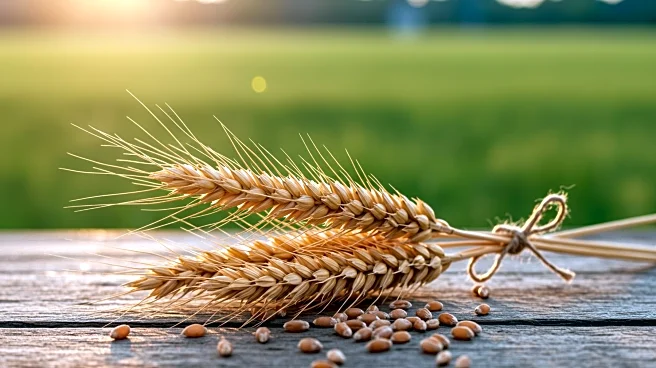What is the story about?
What's Happening?
In 2025, agriculture loans in Twin Bridges are projected to significantly enhance local produce markets, with an estimated 35% increase. The synergy between agriculture loans and critical bridge infrastructure is expected to play a transformative role in advancing rural economies and sustainable farming communities. These loans are crucial for farmers seeking to modernize operations, adopt sustainable technologies, and improve crop yields. The availability of affordable credit is vital for small and medium-scale farmers, especially in the face of economic and climate uncertainties. The infrastructure improvements, particularly in bridge systems, are essential for reducing logistical hurdles and ensuring timely delivery of produce to markets. This development is expected to strengthen the supply chain for fresh produce and drive rural development in regions like Twin Bridges, Cambridge, and Ross.
Why It's Important?
The impact of agriculture loans and improved infrastructure in Twin Bridges is significant for the U.S. agricultural sector. By providing farmers with access to affordable credit and robust transportation links, these initiatives support local food systems and drive rural economic growth. The modernization of farming practices through AI-guided irrigation and environmentally-friendly fertilizers enhances the sector's resilience. Additionally, the infrastructure improvements reduce transportation costs and food miles, ensuring year-round reliability and preventing post-harvest losses. This development encourages investments in agribusiness, logistics, and rural retail, fostering community engagement and unlocking social and economic benefits. The focus on sustainable practices and eco-friendly systems aligns with broader environmental goals, contributing to a more resilient and sustainable agricultural sector.
What's Next?
The future of agriculture in Twin Bridges involves continued investment in infrastructure and financial support. The introduction of modern loan structures, such as green loans and technology-linked credit, will further incentivize sustainable practices and precision agriculture. Community infrastructure loans will support projects near vital transport nodes, enhancing market access and driving local food production. The strategic placement of farmers markets near major bridges will create centralized nodes for direct consumer sales, fostering engagement and ensuring fresh produce at fair prices. As policy frameworks increasingly align financial incentives with infrastructure building, the Twin Bridges region is poised for sustainable rural development, serving as a model for similar communities worldwide.
Beyond the Headlines
The integration of agriculture loans and infrastructure improvements in Twin Bridges has deeper implications for rural development. By reducing logistical barriers and improving connectivity, these initiatives enhance market opportunities and support agri-tourism, stimulating local economies. The focus on sustainability at scale, through integrated tracking and monitoring, leads to lower resource use and decreased carbon emissions. The collaboration between financial institutions and technology providers, such as Farmonaut, empowers agricultural communities with data-driven solutions, driving productivity and environmental stewardship. This holistic approach to rural development highlights the importance of coordinated financial and infrastructure investments in achieving long-term economic growth and resilience.
AI Generated Content
Do you find this article useful?

















